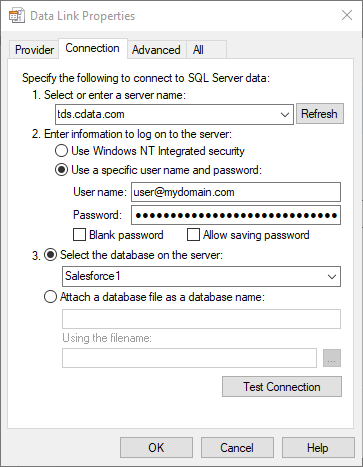Model Context Protocol (MCP) finally gives AI models a way to access the business data needed to make them really useful at work. CData MCP Servers have the depth and performance to make sure AI has access to all of the answers.
Try them now for free →Integrate Jira Data into Power Automate Desktop using CData Connect
CData Connect for Jira Data enables you to integrate Jira data into workflows built using Microsoft Power Automate Desktop.
CData Connect enables you to access live Jira data in workflow automation tools like Power Automate. This article shows how to integrate Jira data into a simple workflow, saving Jira data into a CSV file.
CData Connect provides a live interface for Jira, allowing you to integrate with live Jira data in Power Automate — without replicating the data. Connect uses optimized data processing out of the box to push all supported SQL operations (filters, JOINs, etc) directly to Jira, leveraging server-side processing to quickly return Jira data.
About Jira Data Integration
CData simplifies access and integration of live Jira data. Our customers leverage CData connectivity to:
- Gain bi-directional access to their Jira objects like issues, projects, and workflows.
- Use SQL stored procedures to perform functional actions like changing issues status, creating custom fields, download or uploading an attachment, modifying or retrieving time tracking settings, and more.
- Authenticate securely using a variety of methods, including username and password, OAuth, personal access token, API token, Crowd or OKTA SSO, LDAP, and more.
Most users leverage CData solutions to integrate Jira data with their database or data warehouse, whether that's using CData Sync directly or relying on CData's compatibility with platforms like SSIS or Azure Data Factory. Others are looking to get analytics and reporting on live Jira data from preferred analytics tools like Tableau and Power BI.
Learn more about how customers are seamlessly connecting to their Jira data to solve business problems from our blog: Drivers in Focus: Collaboration Tools.
Getting Started
Configure Jira Connectivity for Power Automate
Connectivity to Jira from Power Automate is made possible through CData Connect Cloud. To work with Jira data from Power Automate, we start by creating and configuring a Jira connection.
- Log into Connect Cloud, click Connections and click Add Connection
![Adding a Connection]()
- Select "Jira" from the Add Connection panel
![Selecting a data source]()
-
Enter the necessary authentication properties to connect to Jira.
To connect to JIRA, provide the User and Password. Additionally, provide the Url; for example, https://yoursitename.atlassian.net.
![Configuring a connection (Salesforce is shown)]()
- Click Create & Test
- Navigate to the Permissions tab in the Add Jira Connection page and update the User-based permissions.
![Updating permissions]()
Add a Personal Access Token
If you are connecting from a service, application, platform, or framework that does not support OAuth authentication, you can create a Personal Access Token (PAT) to use for authentication. Best practices would dictate that you create a separate PAT for each service, to maintain granularity of access.
- Click on your username at the top right of the Connect Cloud app and click User Profile.
- On the User Profile page, scroll down to the Personal Access Tokens section and click Create PAT.
- Give your PAT a name and click Create.
![Creating a new PAT]()
- The personal access token is only visible at creation, so be sure to copy it and store it securely for future use.
With the connection configured, you are ready to connect to Jira data from Power Automate Desktop.
Integrate Jira Data into Power Automate Workflows
After configuring CData Connect with Jira, you are ready to integrate Jira data into your Power Automate workflows. Open Microsoft Power Automate, add a new flow, and name the flow.
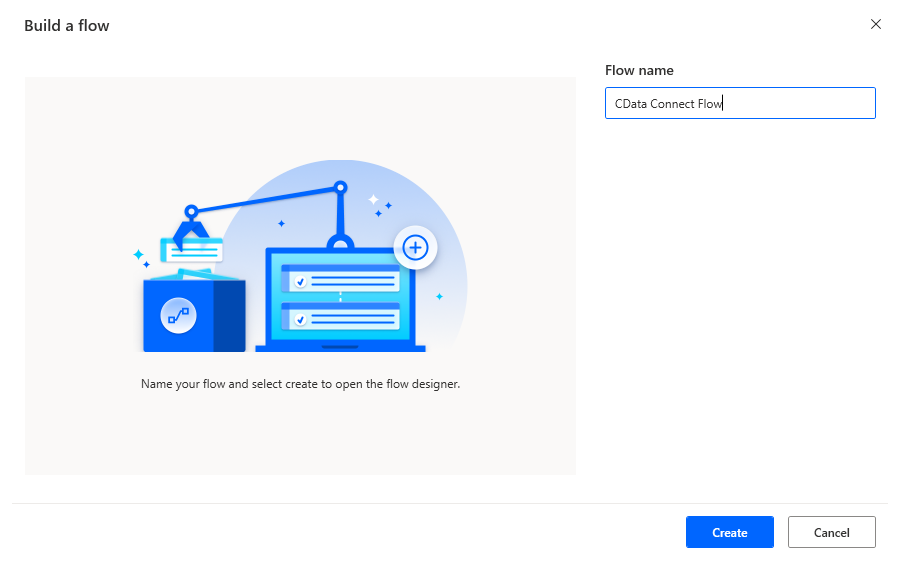
In the flow editor, you can add the options to connect to Jira, query Jira using SQL, and write the query results to a CSV document.
Add an Open SQL Connection Action
Add an "Open SQL connection" action (Action -> Database) and click the option to build the Connection string. In the Data Link Properties wizard:
- On the Provider tab: select Microsoft OLE DB Driver for SQL Server
- On the Connection tab:
- Select or enter a server name: set to tds.cdata.com,14333
- Enter information to lag onto the server: select "Use a specific username and password"
- Set User name to your CData Connect Cloud user name (e.g. user@mydomain.com)
- Set Password to your PAT
- Select the database: use the database configured above (e.g. JIRA1)
- Click "Test Connection" to ensure the connection is configured properly
- Click "OK"
![A configured connection to CData Connect]()
After building the connection string in the Data Link Properties wizard, save the action.
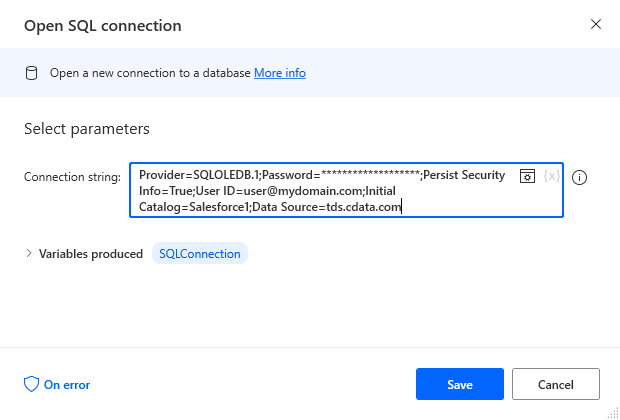
Add an Execute SQL Statement Action
Add an "Execute SQL statement" action (Action -> Database) and configure the properties.
- Get connection by: SQL connection variable
- SQL connection: %SQLConnection% (the variable from the "Open SQL connection" action above)
- SQL statement: SELECT * FROM Issues
After configuring the properties, save the action.
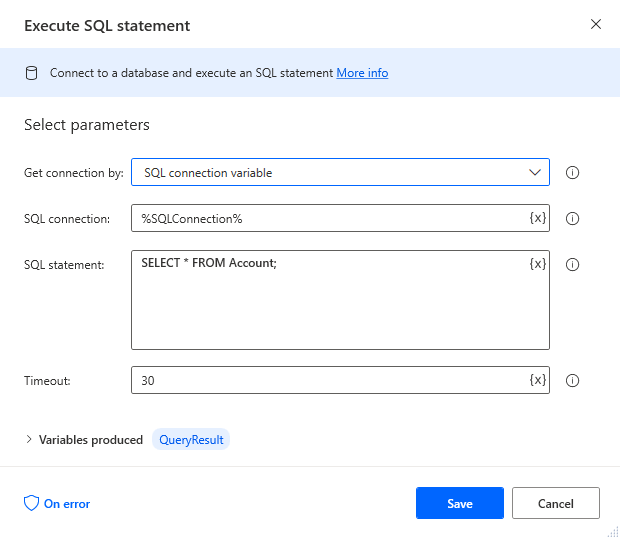
Add a Write to CSV File Action
Add a "Write to CSV file" action (Action -> File) and configure the properties.
- Variable to write to: %QueryResult% (the variable from the "Execute SQL statement" action above)
- File path: set to a file on disk
- Configure Advanced settings as needed.
After configuring the properties, save the action.

Add a Close SQL Connection Action
Add a "Close SQL connection" action (Action -> Database) and configure the properties.
- SQL Connection: %SQLConnection% (the variable from the "Open SQL connection" action above)
After configuring the properties, save the action.
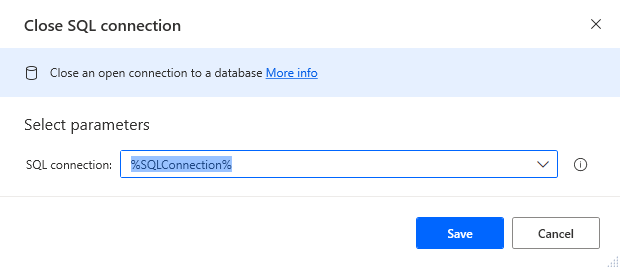
Save & Run the Flow
Once you have configured all the options for the flow, click the disk icon to save the flow. Click the play icon to run the flow.
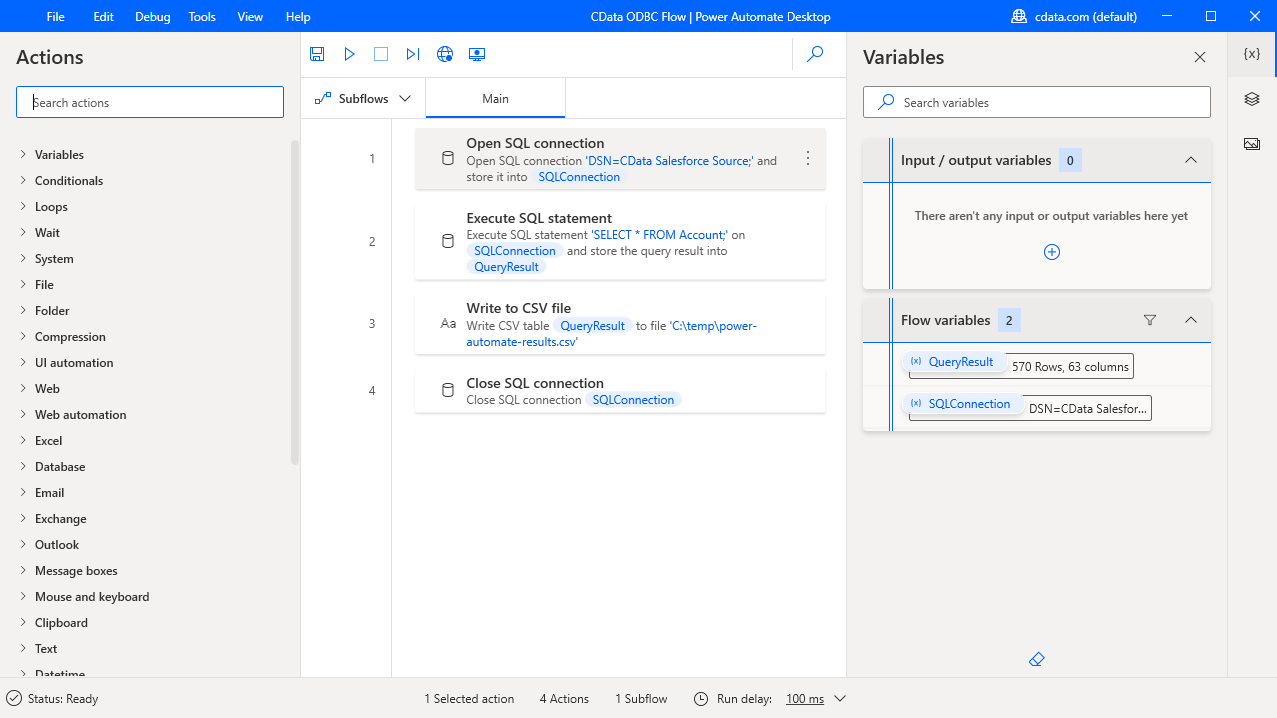
Now you have a workflow to save Jira data into a CSV file.
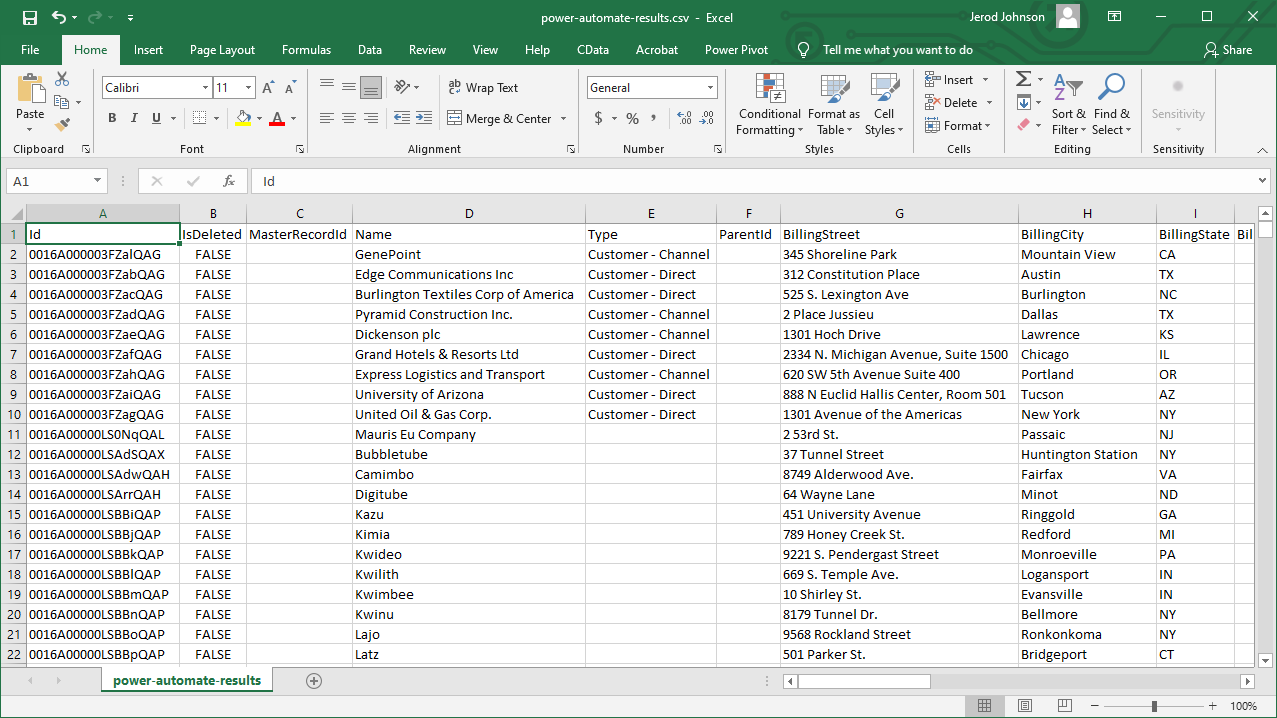
With CData Connect Cloud, you get live connectivity to Jira data within your Microsoft Power Automate workflows.
SQL Access to Jira Data from Cloud Applications
Now you have a direct connection to live Jira data from Power Automate tasks. You can create more connections and workflows to drive business — all without replicating Jira data.
To get SQL data access to 100+ SaaS, Big Data, and NoSQL sources directly from your cloud applications, sign up for a free trial of CData Connect Cloud.
Related Power Automate Articles
This article walks through using CData Connect Cloud with Power Automate Desktop. Check out our other articles for more ways to work with Power Automate (Desktop & Online):






